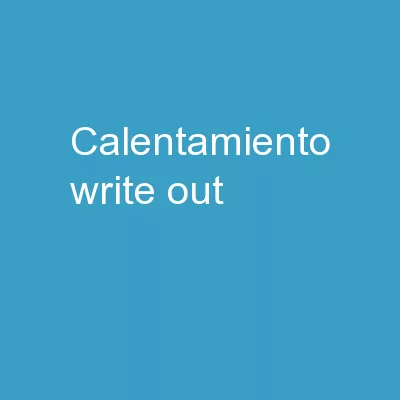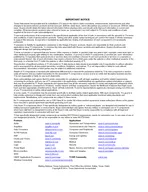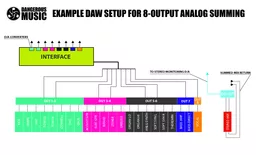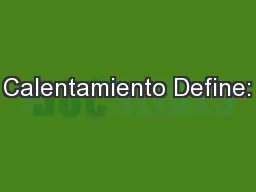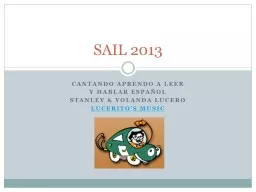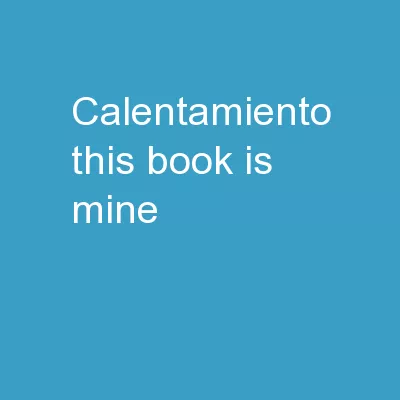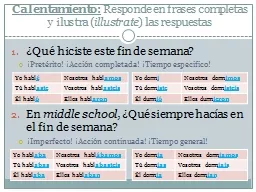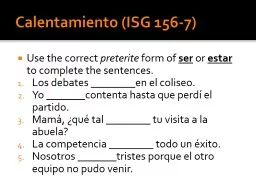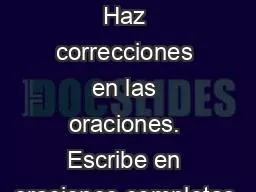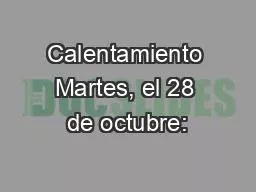PPT-Calentamiento Write out
Author : alida-meadow | Published Date : 2018-11-06
the sentences with por or para Te cambio este jarro es collar Qué te vas a poner la fiesta de Julián El jugador de fútbol se
Presentation Embed Code
Download Presentation
Download Presentation The PPT/PDF document "Calentamiento Write out" is the property of its rightful owner. Permission is granted to download and print the materials on this website for personal, non-commercial use only, and to display it on your personal computer provided you do not modify the materials and that you retain all copyright notices contained in the materials. By downloading content from our website, you accept the terms of this agreement.
Calentamiento Write out: Transcript
Download Rules Of Document
"Calentamiento Write out"The content belongs to its owner. You may download and print it for personal use, without modification, and keep all copyright notices. By downloading, you agree to these terms.
Related Documents

